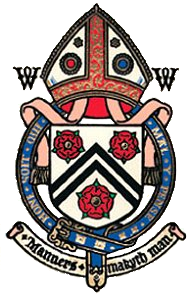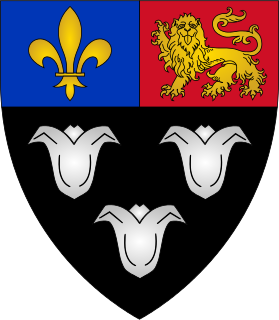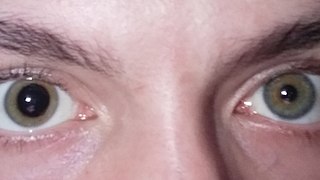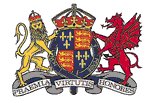Related Research Articles

Winchester College is a public school in Winchester, Hampshire. It was founded by William of Wykeham in 1382 and has existed in its present location ever since. It is the oldest school of the nine considered by the Clarendon Commission and is regarded as among the most prestigious in the world. The school is currently undergoing a transition to become co-educational and to accept day pupils, having previously been a boys' boarding school.

Eton College is a public school in Eton, Berkshire, England. It was founded in 1440 by Henry VI under the name Kynge's College of Our Ladye of Eton besyde Windesore, intended as a sister institution to King's College, Cambridge, making it the 18th-oldest Headmasters' and Headmistresses' Conference (HMC) school. Eton is particularly well-known for its history, wealth, and notable alumni, called Old Etonians.

Apt Pupil is a 1998 American psychological thriller film based on the 1982 novella of the same name by Stephen King. The film was directed by Bryan Singer and stars Ian McKellen, Brad Renfro, David Schwimmer and Bruce Davison. Set in the 1980s in southern California, the film tells the fictional story of high school student Todd Bowden (Renfro), who discovers a fugitive Nazi war criminal, Kurt Dussander (McKellen), living in his neighborhood under a pseudonym. Bowden, obsessed with Nazism and the Holocaust, persuades Dussander to share his stories, and their relationship stirs malice in each of them. Singer has called Apt Pupil "a study in cruelty", with Nazism serving as a vehicle to demonstrate the capacity of evil.

The pupil is a black hole located in the center of the iris of the eye that allows light to strike the retina. It appears black because light rays entering the pupil are either absorbed by the tissues inside the eye directly, or absorbed after diffuse reflections within the eye that mostly miss exiting the narrow pupil. The term "pupil" was coined by Gerard of Cremona.
Education in the United Kingdom is a devolved matter with each of the countries of the United Kingdom having separate systems under separate governments: the UK Government is responsible for England; whilst the Scottish Government, the Welsh Government and the Northern Ireland Executive are responsible for Scotland, Wales and Northern Ireland, respectively.

The human eye is a sensory organ, part of the sensory nervous system, that reacts to visible light and allows us to use visual information for various purposes including seeing things, keeping our balance, and maintaining circadian rhythm.

George Heriot's School is a Scottish independent primary and secondary day school on Lauriston Place in the Old Town of Edinburgh, Scotland. In the early 21st century, it has more than 1600 pupils, 155 teaching staff, and 80 non-teaching staff. It was established in 1628 as George Heriot's Hospital, by bequest of the royal goldsmith George Heriot, and opened in 1659. It is governed by George Heriot's Trust, a Scottish charity.

St Edward's School is a public school in Oxford, England.

Aberdeen Grammar School is a state secondary school in Aberdeen, Scotland. It is one of thirteen secondary schools run by the Aberdeen City Council educational department.

Anisocoria is a condition characterized by an unequal size of the eyes' pupils. Affecting up to 20% of the population, anisocoria is often entirely harmless, but can be a sign of more serious medical problems.
In optics a ray is an idealized geometrical model of light, obtained by choosing a curve that is perpendicular to the wavefronts of the actual light, and that points in the direction of energy flow. Rays are used to model the propagation of light through an optical system, by dividing the real light field up into discrete rays that can be computationally propagated through the system by the techniques of ray tracing. This allows even very complex optical systems to be analyzed mathematically or simulated by computer. Ray tracing uses approximate solutions to Maxwell's equations that are valid as long as the light waves propagate through and around objects whose dimensions are much greater than the light's wavelength. Ray optics or geometrical optics does not describe phenomena such as diffraction, which require wave optics theory. Some wave phenomena such as interference can be modeled in limited circumstances by adding phase to the ray model.

A public school in England and Wales is a fee-charging endowed school originally for older boys that was "public" in the sense of being open to pupils irrespective of locality, denomination or paternal trade or profession. Although the term "public school" has been in use since at least the 18th century, its usage was formalised by the Public Schools Act 1868, which put into law most recommendations of the 1864 Clarendon Report. Nine prestigious schools were investigated by Clarendon and seven subsequently reformed by the Act: Eton, Shrewsbury, Harrow, Winchester, Rugby, Westminster, and Charterhouse.

Norwich School is a selective English independent day school in the close of Norwich Cathedral, Norwich. Among the oldest schools in the United Kingdom, it has a traceable history to 1096 as an episcopal grammar school established by Herbert de Losinga, first Bishop of Norwich. In the 16th century the school came under the control of the city of Norwich and moved to Blackfriars' Hall following a successful petition to Henry VIII. The school was refounded in 1547 in a royal charter granted by Edward VI and moved to its current site beside the cathedral in 1551. In the 19th century it became independent of the city and its classical curriculum was broadened in response to the declining demand for classical education following the Industrial Revolution.
References
- ↑ Daphne M. Gulland, David Hinds-Howell (1986), The Penguin Dictionary of English Idioms, p. 125, ISBN 9780140511352
- ↑ Philip Richard D. Corrigan (1990), Social Forms/human Capacities, p. 176, ISBN 9780415043540
- ↑ David Fontana (6 April 1994), Managing classroom behaviour, ISBN 9781854331236